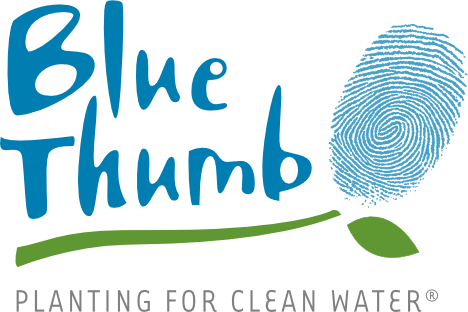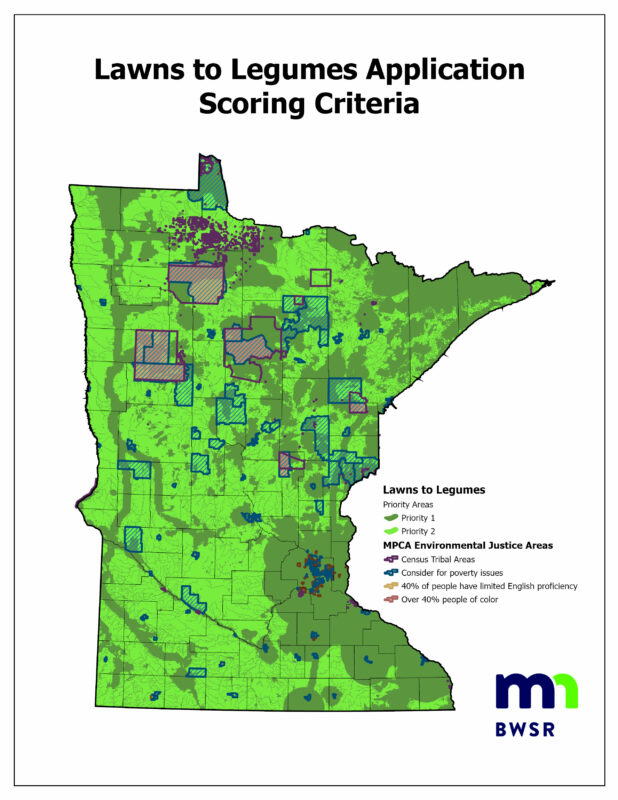The following are requirements of the Lawns to Legumes program. Lawns to Legumes grant recipients consent to these agreements upon confirming their grant award.
Timeline
I understand that if I am offered and accept a grant, my project installation will need to be completed by the deadline specified in my grant notification, to allow time for final grant reporting before the end of the grant period. I understand that only purchases made after receiving the grant are eligible for reimbursement.
Project Types
I understand eligible project types are limited to “Native Pocket Plantings”, “Pollinator Beneficial Trees and Shrubs”, “Pollinator Lawns” and “Pollinator Meadows”. Each is highlighted in Blue Thumb’s Grantee Guide. Due to their simplicity, native pocket plantings may be the best option for many participants.
Local Restrictions
I agree to ensure my project abides by local laws and ordinances. For example, if I intend to plant in a boulevard, I will follow my city guidelines, including applying for any necessary permit(s) and keeping my planting within height requirements. If I am a renter, I have received permission from my landlord to complete a planting project on the property.
Locally Sourced, Neonicotinoid-Free Native Plants
I agree to source my native plants and seeds from within 175 miles of my location and verify that plants are free from systemic pesticides, to the extent possible. Blue Thumb has a list of recommended native plant nurseries and retailers on the Grantee Guide.
Eligible Expenses for Reimbursement
I understand eligible expenses for reimbursement include native plants (with a few exceptions including eligible cultivars for trees/shrubs and pollinator lawn species), compost, mulch, edging, contractor installation or DIY equipment rental, delivery fees, and planters and raised bed materials (up to $100). A full list of eligible expenses is available on the Grantee Guide. Only eligible purchases made after I am notified of being awarded a grant qualify for reimbursement.
Reimbursement Request Requirement
I understand filling out the Reimbursement Request Form on bluethumb.org will be required for reimbursement, which will include uploading receipts and before/after photos, sharing project size information, and documenting a minimum of 2 hours spent on the project.
Available Resources
I understand that technical resources are available on the Blue Thumb Grantee Guide, Blue Thumb Resources page, and MN BWSR L2L webpage (bwsr.state.mn.us/l2l).
Signage
I understand signage will be provided for all projects that receive individual support, and will be mailed after my reimbursement request is approved.
Maintenance Commitment
I agree to plan for and follow through on the maintenance of my project. This includes watering and weeding. Weeding should occur at least three times per year: in the spring, mid-summer, and early fall. Pollinator lawns can also be mowed to control weeds. For the next two years, plants should receive 1 inch of water each week. In times of drought, water garden as necessary. After the first two years, plants will be established and able to withstand drought on their own. I understand my project must be located in an area free from pesticides to every extent possible. I will not apply pesticides to my project or allow anyone else to do so.
Email Communication
I confirm the email address I’ve provided is valid and in use. I understand that I am responsible for reading and responding (if requested) to emails sent to me in a timely manner. I acknowledge that failure to do so may result in removal from the program.
 Lawns to Legumes is a planting for pollinators grant program that Blue Thumb facilitates with the Minnesota Board of Water and Soil Resources. Any Minnesotan can apply to receive reimbursement for native planting projects and support at-risk pollinators like the monarch butterfly and rusty patched bumble bee. View a print-ready program overview here.
Lawns to Legumes is a planting for pollinators grant program that Blue Thumb facilitates with the Minnesota Board of Water and Soil Resources. Any Minnesotan can apply to receive reimbursement for native planting projects and support at-risk pollinators like the monarch butterfly and rusty patched bumble bee. View a print-ready program overview here.
